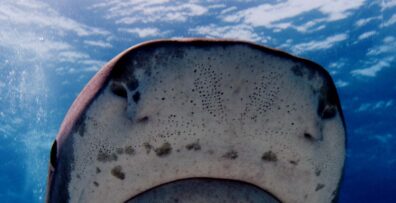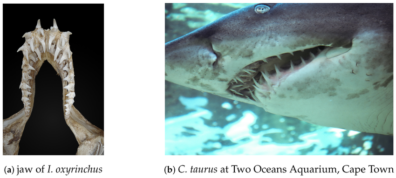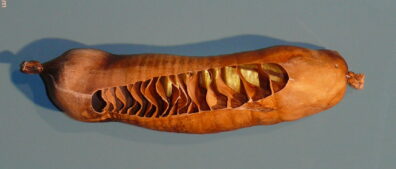Dear Prince,
When I was a kitten, I saw a movie about shark attacks. It made me nervous to go into the water.
I talked about that with my friend Nora Hickey. She’s a fish veterinarian at Washington State University.
She told me that sharks don’t eat people.
Many sharks can’t even bite. They have mouths adapted to sift sand or slurp up plankton.
Sharks that can bite don’t hunt humans. They eat prey with a thick fat layer like seals and sea lions. Muscly animals like birds, cats and people seem to taste bad to sharks.
“Even if they bit you, they probably wouldn’t like it,” Hickey said. “They’d probably be like, ‘Uh, no thank you.’”
Shark attacks are usually a mistake—or a shark trying to defend itself.
Sharks have powerful senses. They can detect tiny smells from about a quarter mile away. And they can hear for miles. Like other fish, they have sensitive cells all along their bodies. They also have tiny pores on their snouts that pick up electrical signals in the water.

These tiny holes are called ampullae of Lorenzini. They’re filled with a snot-like jelly. They detect electrical signals that travel through salt water. It helps sharks find living things like mollusks buried in the sand. Albert kok CC BY 3.0
So, a shark might sense something splashing in the water and come check it out. It might think the splasher is prey and take a nibble.
Then, a few things happen.
Some sharks roll back their eyes when they bite. Sometimes a protective membrane slides over the eyeball. That keeps their eyes safe if the prey fight backs.
Sharks can’t chew up and down like we do. So, it might shake its head back and forth to tear off a bite.
Some of the shark’s teeth may pop out. They have rows and rows of teeth. When a tooth falls out, a new one moves up to take its place. Hickey told me that happens so often that the ocean floor is littered with shark teeth.

Sharks constantly replace their teeth. They always have extras in case they need new ones. Wilmers, Waldron & Bargmann, Swantje. 10.3390/nano11040969. CC BY 4.0
At this point, the shark will probably realize you’re a gross human. They’ll likely swim away.
But if you magically got fully swallowed, or if some piece of you did, you’d be in for a weird journey through the shark’s guts.
“Sharks and sturgeons have a spiral valve intestine,” Hickey said. “It’s a way to increase the digestive surface area of the intestine without increasing the length of the intestine. Basically, you’d be going through a spiral like a water slide.”

This is a nurse shark’s intestine. Those thin, chip-like layers make a spiral. Haplochromis CC BY-SA 3.0
A shark might also attack if humans provoke it or threaten its home.
Humans are way more dangerous to sharks than sharks are to humans. People hunt sharks—or accidentally catch them in nets. That’s really bad for sharks that are ram ventilators. They can’t push water over their gills on their own. If they can’t swim, they can’t breathe.
People drive loud boats or subs into a shark’s territory. Swimmers and divers may flail around in ways that seem threatening. Sometimes people try to interact with wild sharks, especially species we know to be gentle.
It turns out humans can be pretty scary. And those jaw-some, toothy fish are a bit misunderstood.
Sincerely,
Dr. Universe